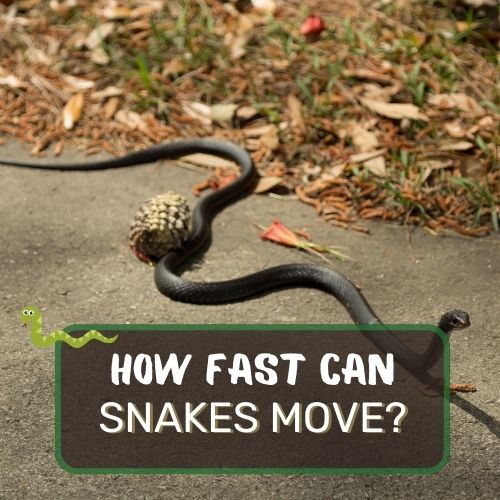
Curious about how fast can snakes move?
This article delves into the fascinating world of snake speed, exploring the factors influencing their movement rates and the incredible adaptations that enable them to navigate diverse terrains.
From the impressive speeds of species like the sidewinder and black mamba to the mechanics behind their unique modes of locomotion, we uncover the science and stories that make snake speed a captivating subject.
Join us in unraveling the mysteries of snake swiftness, understanding the role of snake speed in different environments, and even debunking common myths.
Get ready to gain insights into the world of snake locomotion like never before.
Table of Contents
- 1 How Fast Can Snakes Move? (18 mph Max)
- 2 Snake Speed Basics
- 3 The Fastest Snakes in the World
- 4 Snakes vs. Humans: Can We Outrun Them?
- 5 How Snakes Move: Slithering Mechanics
- 6 Snake Speed in Different Environments
- 7 The Science Behind Snake Speed
- 8 Fascinating Snake Speed Records
- 9 Snake Speed in Popular Culture
- 10 FAQ
- 11 Conclusion
How Fast Can Snakes Move? (18 mph Max)
Snakes’ speeds vary based on species, size, and environmental factors. The fastest snakes, like the sidewinder and black mamba, can reach speeds up to 18 miles per hour (29 kilometers per hour) and 12 miles per hour (19 kilometers per hour), respectively. However, most snakes move at more moderate speeds, often ranging from 5 to 10 miles per hour (8 to 16 kilometers per hour). Their unique modes of movement, such as lateral undulation and sidewinding, allow them to navigate diverse terrains with agility and efficiency.
Snake Speed Basics
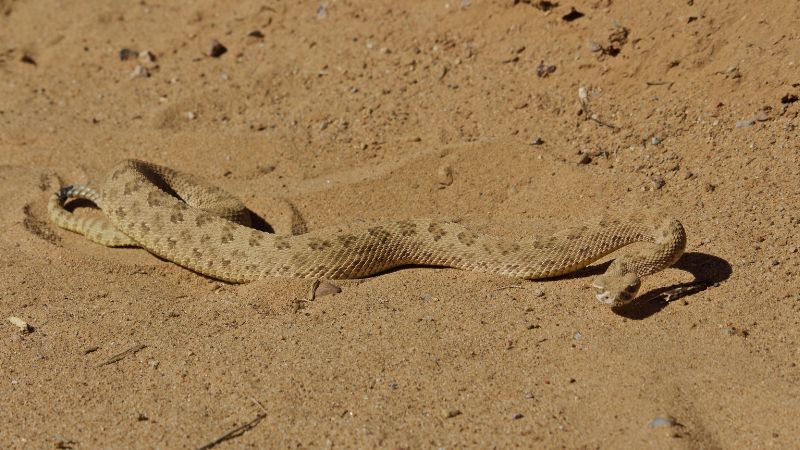
Snake Speed and How It Is Measured
Snake speed refers to the rate at which these legless reptiles move across different terrains. Measuring snake speed involves assessing the distance they cover within a specific timeframe. Experts often use controlled environments to gauge their speed accurately.
By placing a snake in a confined space and recording its movement with high-speed cameras, researchers can calculate its speed precisely.
Factors That Affect Snake Speed
Various factors influence the speed of a snake’s movement. The diversity of snake species plays a significant role. Larger species like pythons tend to move slower due to their size, while smaller and more agile species like cobras can move faster.
Environmental conditions also come into play. Different terrains, such as sand, grass, or rocky surfaces, can impact their speed.
Additionally, snakes being ectothermic—relying on the environment to regulate body temperature—means that warmer temperatures can increase their activity and speed.
Comparison of Snake Speed to Other Animals’ Speeds
While snakes might not match the velocity of land mammals like cheetahs, they possess their own distinctive methods of swift movement.
Snakes’ elongated bodies and specialized muscle structure allow them to move efficiently using a serpentine motion.
This unique mode of locomotion enables them to navigate diverse landscapes effectively.
The Fastest Snakes in the World
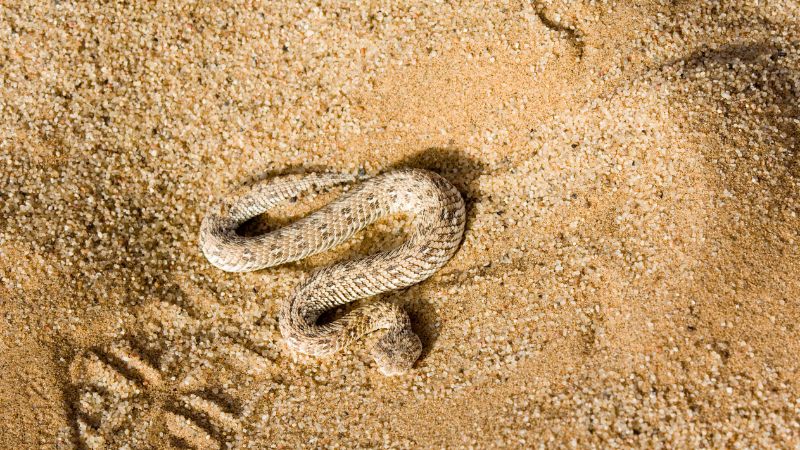
The Sidewinder
One of the fastest snakes globally is the sidewinder, known for its remarkable adaptation to desert environments. Native to North America, this snake has developed a distinctive slithering technique ideal for traversing loose sand.
With a top speed of approximately 18 miles per hour (29 kilometers per hour), the sidewinder is a swift predator in its habitat. Its movement involves creating a wave-like motion along its body, allowing it to propel forward even on challenging surfaces.
Other Fast Snakes
Beyond the sidewinder, several other snakes showcase impressive speeds. The black mamba, found in Africa, stands out for its agility.
Reaching speeds of up to 12 miles per hour (19 kilometers per hour), it’s considered one of the fastest land snakes.
Another example is the common death adder, native to Australia. While not as swift as some counterparts, its ambush hunting strategy includes bursts of rapid movement to surprise its prey.
Reasons Behind Impressive Speeds
These snakes’ impressive speeds are a result of their unique adaptations to their habitats and lifestyles. The sidewinder’s sidewinding motion minimizes contact with scorching desert sand, preventing overheating.
The black mamba’s speed helps it efficiently navigate its extensive territory, while the common death adder’s bursts of speed aid in ambushing unsuspecting prey.
Snake speed is a captivating aspect of their biology and behavior. Through distinctive adaptations and diverse habitats, snakes showcase their ability to move swiftly despite their lack of limbs.
Understanding the factors influencing snake speed not only illuminates their ecology but also underscores the marvels of evolutionary adaptation in the animal kingdom.
Snakes vs. Humans: Can We Outrun Them?

The Myth that Snakes Are Faster than Humans
The notion that snakes are lightning-fast creatures often lingers as a popular myth. However, it’s time to debunk this misconception. While certain snake species can indeed move swiftly, the majority are not built for speed.
This myth stems from the mesmerizing way snakes move and strike, which can create an illusion of rapid movement.
Comparison of Snake Speed to Human Running Speed
In a straightforward race, can humans outpace their legless counterparts? The answer is generally yes. While some of the fastest snakes can reach impressive speeds, most fall within the range of 5 to 10 miles per hour (8 to 16 kilometers per hour).
On the other hand, an average human can comfortably run at speeds ranging from 8 to 12 miles per hour (13 to 19 kilometers per hour).
Even the fastest snake, the sidewinder, would find it hard to match the swiftness of a moderately paced jog for a human.
The Advantages and Disadvantages of Each Species in Terms of Speed
Both snakes and humans have evolved specific locomotion strategies that suit their respective lifestyles. Snakes, with their unique slithering motion, excel at navigating tight spaces and challenging terrains.
This mode of movement allows them to conserve energy while on the hunt or in pursuit of prey. Humans, with their bipedal nature, have developed endurance and the ability to cover longer distances efficiently.
The disadvantage for snakes lies in their inability to maintain high speeds for extended periods due to their reliance on energy-efficient methods. Humans, on the other hand, can sustain their pace over longer distances, giving them an advantage in endurance activities.
How Snakes Move: Slithering Mechanics
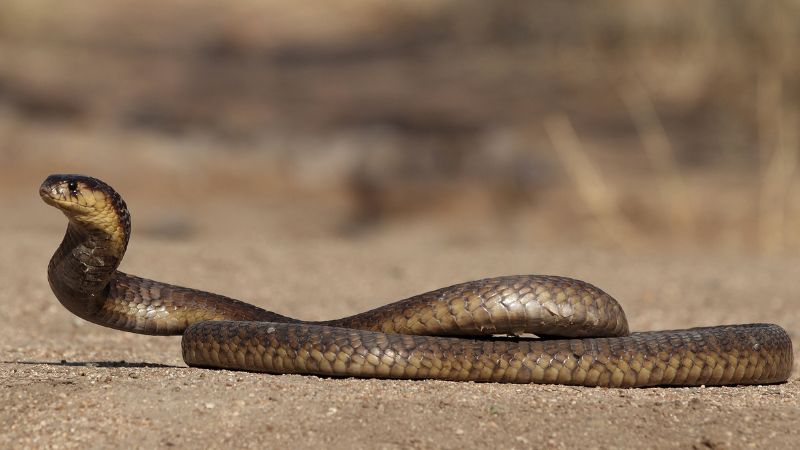
The Biomechanics of Snake Slithering
Snake movement might seem simple at first glance, but it’s a marvel of biomechanical adaptation. Unlike typical walking or running, snakes engage in lateral undulation, a wave-like movement along their body.
This involves the muscles on the snake’s belly and sides contracting and relaxing in a coordinated manner, propelling it forward.
Different Methods of Snake Locomotion
Snakes have evolved various methods of locomotion to suit different terrains. Rectilinear movement involves moving in a straight line by alternately lifting the scales on each side of the body. This is useful for confined spaces.
Serpentine movement, as seen in sidewinders, involves creating curves along the body while moving sideways, propelling the snake forward.
Sidewinding, the namesake of the sidewinder snake, is an advanced form of serpentine movement used for sandy terrain. Snakes can also use concertina movement, in which they brace parts of their body against surfaces and then push forward.
How Snakes Achieve Speed and Agility through Unique Body Structure
Snakes’ bodies are perfectly designed for their mode of movement. Their elongated shape minimizes ground contact, reducing friction. The scales on their belly offer grip, while the scaly texture helps with traction.
The lack of limbs means there’s no friction or drag from limbs hitting the ground. These adaptations collectively allow snakes to achieve impressive speed and agility while conserving energy.
The biomechanics behind snake movement are a testament to the wonders of evolution and adaptation.
Through a variety of methods and body structures, these legless creatures have found ingenious ways to traverse their environments with both speed and efficiency.
Snake Speed in Different Environments
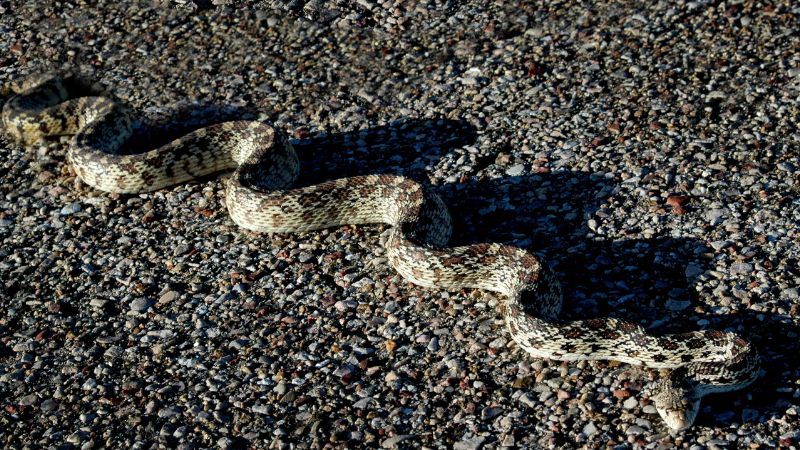
Snake speed isn’t a one-size-fits-all attribute; it varies across different environments. Snakes have adapted their locomotion strategies to suit the challenges posed by land, water, and even trees.
The diverse habitats they inhabit have led to specific adaptations in speed and movement.
Snakes Adapted for Speed in Specific Environments
In the realm of land, the black racer stands out. This snake is known for its incredible speed, capable of reaching 6 to 8 miles per hour (10 to 13 kilometers per hour). Its slender body and swift movement make it a master of evasion.
In aquatic environments, the sea snake takes the spotlight. With paddle-like tails and streamlined bodies, sea snakes glide efficiently through water.
Even in trees, some snakes have evolved adaptations for speed. The Paradise Tree Snake is an excellent climber with a body optimized for moving swiftly along branches.
The Challenges and Advantages in Each Environment
Each environment presents unique challenges and advantages for snake speed. On land, obstacles like rocks and vegetation can hinder swift movement, while the ability to quickly evade predators is advantageous.
In aquatic habitats, water resistance affects speed, but the streamlined body shape facilitates efficient movement. Tree-dwelling snakes need to balance speed with agility as they navigate complex arboreal landscapes.
The Science Behind Snake Speed
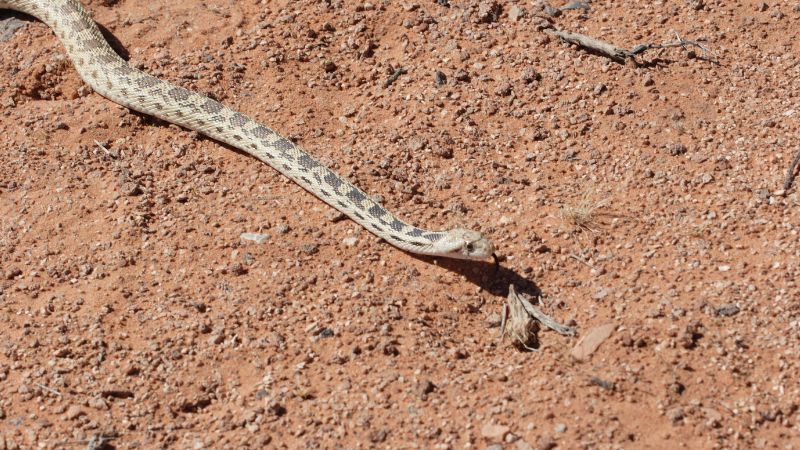
Understanding snake speed involves a combination of scientific research and technological tools.
High-speed cameras and controlled environments have enabled researchers to capture accurate measurements of snake movement.
These studies often reveal the intricate details of snake locomotion mechanics.
The Limitations and Challenges in Accurately Measuring Snake Speed
Measuring snake speed is not without its challenges. Snakes can exhibit different speeds based on factors like temperature, health, and motivation.
Capturing their natural movement in controlled settings might not fully represent their capabilities in the wild. Additionally, some snake species might not thrive or display their full range of speeds in captivity.
The Role of Snake Speed in Evolutionary Biology and Predator-Prey Dynamics
The ability to move swiftly has significant implications for snakes’ survival and evolutionary success. Speed plays a role in both predator-prey dynamics and the effectiveness of their hunting strategies.
Snakes that can strike quickly have an advantage in catching elusive prey, while those adept at escaping predators increase their chances of survival.
Over time, the pressures of predation and competition have likely influenced the development of diverse snake locomotion strategies.
Fascinating Snake Speed Records
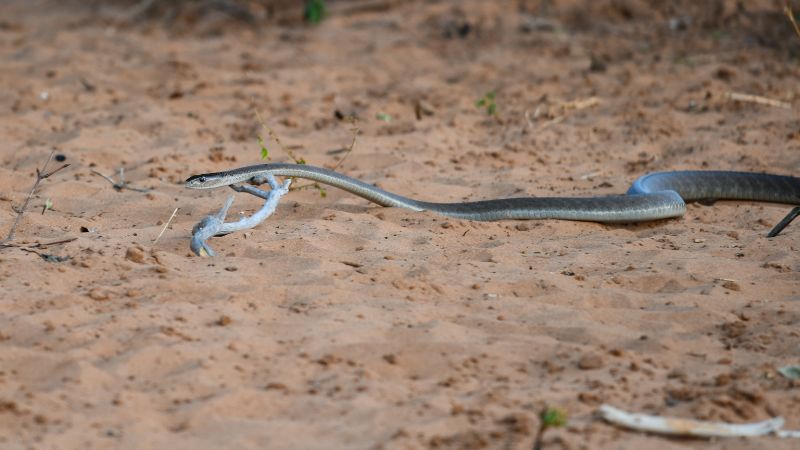
The realm of snake speed isn’t just limited to the mundane; there are some astonishing records that deserve attention. These records, collected from various sources, shed light on the exceptional capabilities of certain snake species.
Highlighting the Fastest Recorded Snake Speeds in Different Species
Among the standout speedsters is the black mamba, famous for its incredible speed of up to 12 miles per hour (19 kilometers per hour). The common death adder showcases bursts of speed of around 6 to 8 miles per hour (10 to 13 kilometers per hour).
Notably, the sidewinder snakes of North America achieve speeds of up to 18 miles per hour (29 kilometers per hour) using their distinctive sidewinding motion.
The Circumstances and Context Behind Exceptional Records
These extraordinary speeds are often achieved under specific conditions. For instance, the black mamba’s swiftness is attributed to its long, slender body, which allows it to move with remarkable agility.
The sidewinder’s rapid movement is a testament to its unique sidewinding technique, well-suited for its desert habitat. These records showcase the adaptability and specialized skills of different snake species in their respective environments.
Snake Speed in Popular Culture
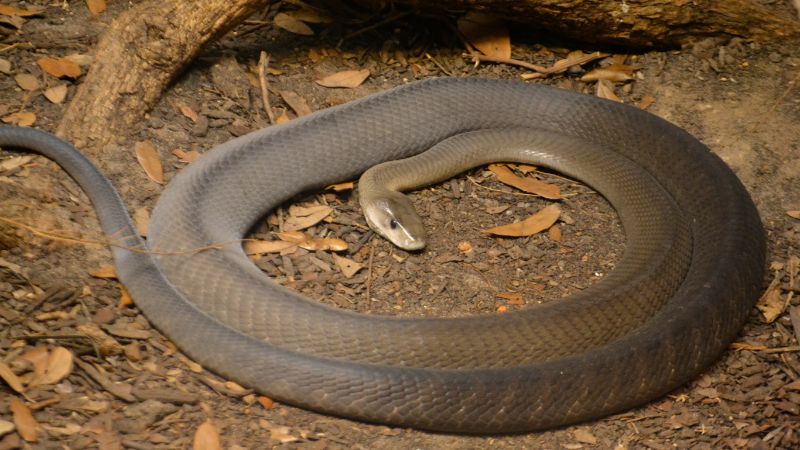
The Portrayal of Snake Speed in Movies, Books, and Folklore
Snakes’ swift movements have long captured human imagination, finding their way into various forms of media and cultural narratives.
In movies like “Indiana Jones,” snakes are often depicted as fast-moving threats, adding tension and excitement to scenes. In books and folklore, the image of a quick and elusive snake has been perpetuated, further influencing perceptions.
The Influence of Snake Speed on Human Perceptions and Fears
The portrayal of fast-moving snakes has contributed to common fears and misconceptions about these creatures. Their ability to strike swiftly and disappear can evoke anxiety.
The association of speed with danger has amplified the fear of encountering snakes, even though most snake encounters are harmless.
The Impact of Snake Speed on Snake Conservation and Protection Efforts
The misperception of all snakes as lightning-fast predators has implications for snake conservation. Many harmless snake species suffer due to mistaken identities or irrational fears.
Educating the public about the diversity of snake behaviors, including varied speeds and lifestyles, can foster a greater understanding and appreciation for these essential components of ecosystems.
FAQ
Can We Outrun a Snake?
In most cases, yes. While some snakes can move swiftly, the average human can outrun them. Snakes’ speed varies, and their agility lies in their unique methods of movement, which might not match human running speeds.
What’s the Fastest a Snake Can Move?
The sidewinder snake, known for its unique sidewinding motion, holds the title of the fastest snake, reaching speeds of up to 18 miles per hour (29 kilometers per hour). However, this speed is achieved in specific circumstances and environments.
What Is the Fastest Snake in South Africa?
The black mamba holds this distinction. Known for its agility and speed, the black mamba can reach speeds of up to 12 miles per hour (19 kilometers per hour), making it one of the fastest land snakes globally.
Can You Outrun a Mamba Snake?
In most cases, humans can outrun a mamba snake. While mambas are swift and agile, humans can maintain a faster running pace over longer distances. It’s important to remember that snakes generally avoid confrontation and would rather escape than chase humans.
Will a Black Mamba Snake Chase You?
Contrary to some misconceptions, black mambas are not inclined to chase humans. They’re shy and prefer to avoid encounters. If threatened, a mamba might adopt a defensive stance, but chasing humans is not a typical behavior.
Conclusion
The realm of snake speed is a captivating journey through diverse landscapes, adaptations, and cultural influences. From the mesmerizing sidewinder to the sleek black mamba, snake speed showcases the remarkable diversity of nature’s designs.
The exploration of snake speed highlights the nuanced factors affecting their movement, offering insights into the intricacies of their behaviors.
Understanding snake speed goes beyond debunking myths; it’s an essential step in fostering coexistence and conservation efforts.
By dispelling misconceptions, appreciating their ecological roles, and recognizing their unique adaptations, we can contribute to the protection of these vital creatures.
In conclusion, the world of snake speed unravels the mysteries of these remarkable animals, reminding us of the intricate connections between their biology, environments, and our perceptions.
As we continue to learn more about the nuances of snake movement, we uncover new layers of awe and respect for these fascinating inhabitants of our natural world.

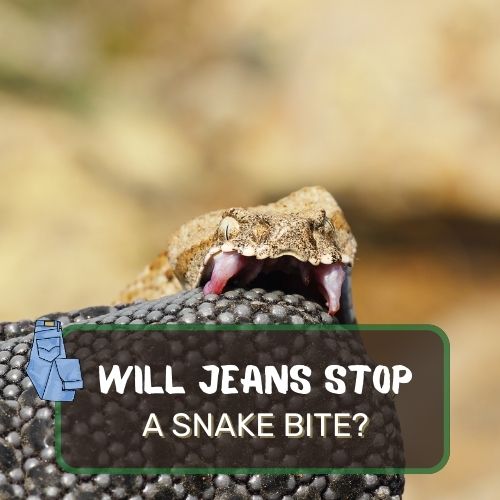


0 Comments